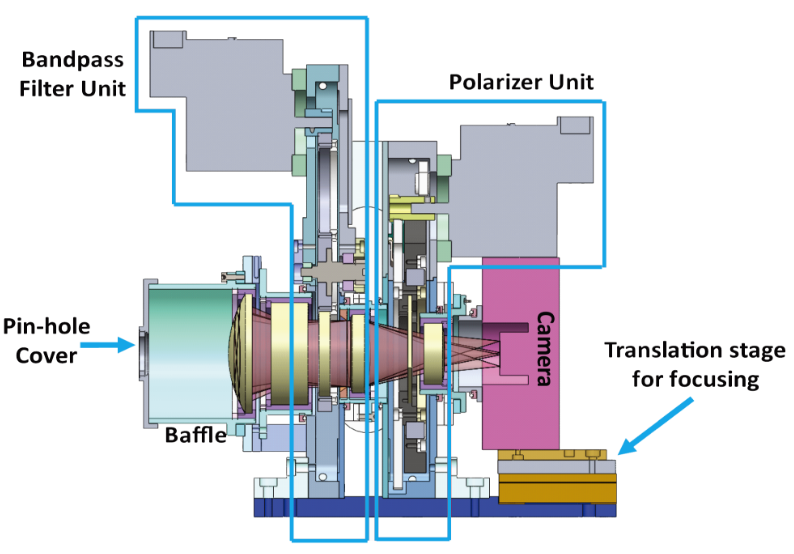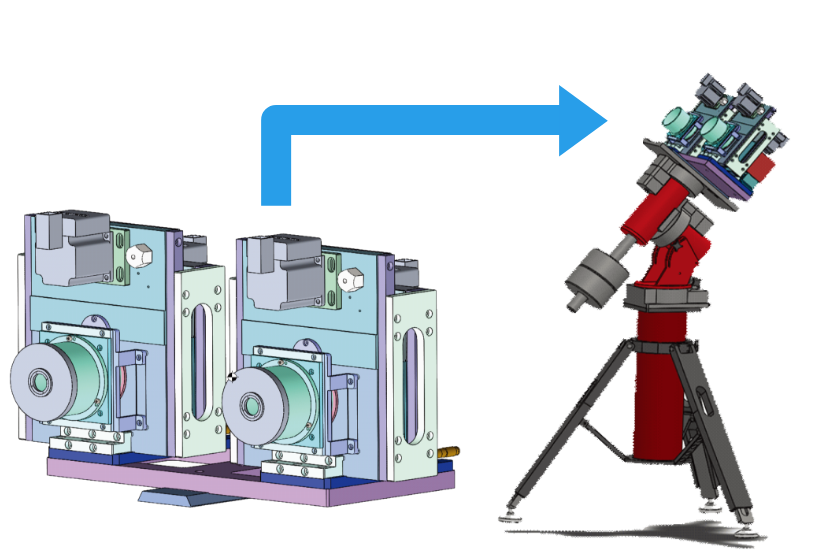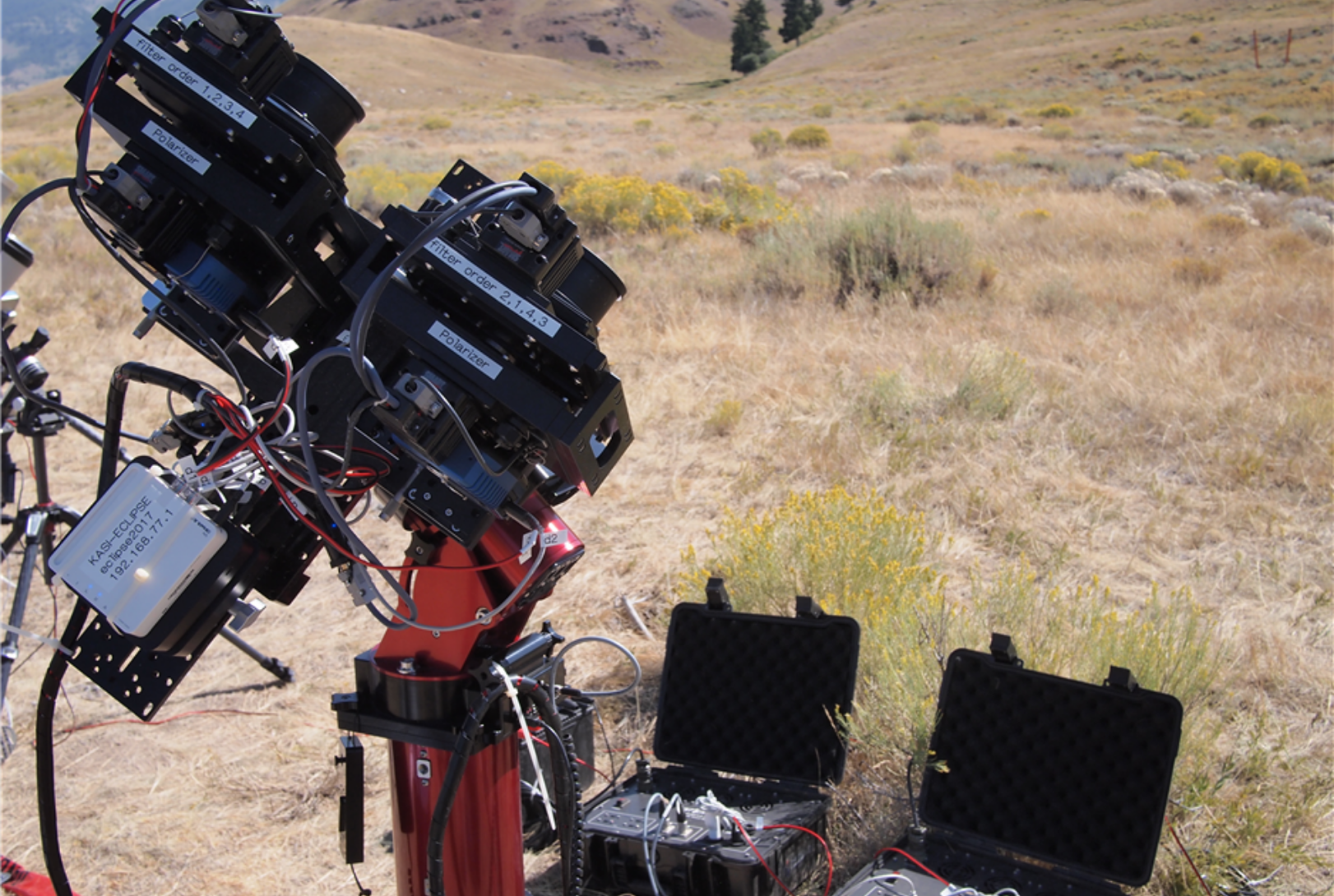A total solar eclipse (TSE) provides the opportunity for a proof of concept of the CODEX in the early phase of the collaboration between KASI and NASA for the coronagraph development. KASI developed an eclipse observation system, the Diagnostic Coronagraph Experiment (DICE), which is two identical optical camera systems for redundancy and higher signal to noise ratio. Each system is composed of a compact lens group with the aperture diameter of 50 mm, a bandpass filter unit, a polarizer unit, a CCD camera, and a small computer. It was designed to observe the polarized brightness images of corona using 10 nm bandpass filters at 393.4 and 402.5 nm for temperature, and 399.0 and 424.9 nm for speed. The wavelengths for temperature were chosen to maximize the intensity ratio change depending on the temperature while minimizing dependence on the speed, and vice versa for the wavelengths for speed. The linear polarizer is rotated by 60 degrees to obtain the polarized brightness. Its optical field of view is out to 14 R_sun, similar to the early design of CODEX, and using 2k CCD, its spatial resolution is 13 arcsec. In front of the lens group, a baffle blocks any stray light from outside the field of view, and a pin-hole cover is used to calibrate the brightness of the solar corona and protect the lenses and the CCD camera while the DICE is not operating. Two DICE units are mounted on a computer controlled motorized tracking system, and controlled by a laptop computer via a wireless network switch. We also developed a portable power supply unit that uses a 12 V car battery. Using DICE, we conducted test observation in the frame of the North-American TSE expedition in 2017 to test the fundamental technologies of optics, filter system, and operating system.
 Layout of a single DICE.
Layout of a single DICE.
 Two DICEs mounted on a tracking system.
Two DICEs mounted on a tracking system.





